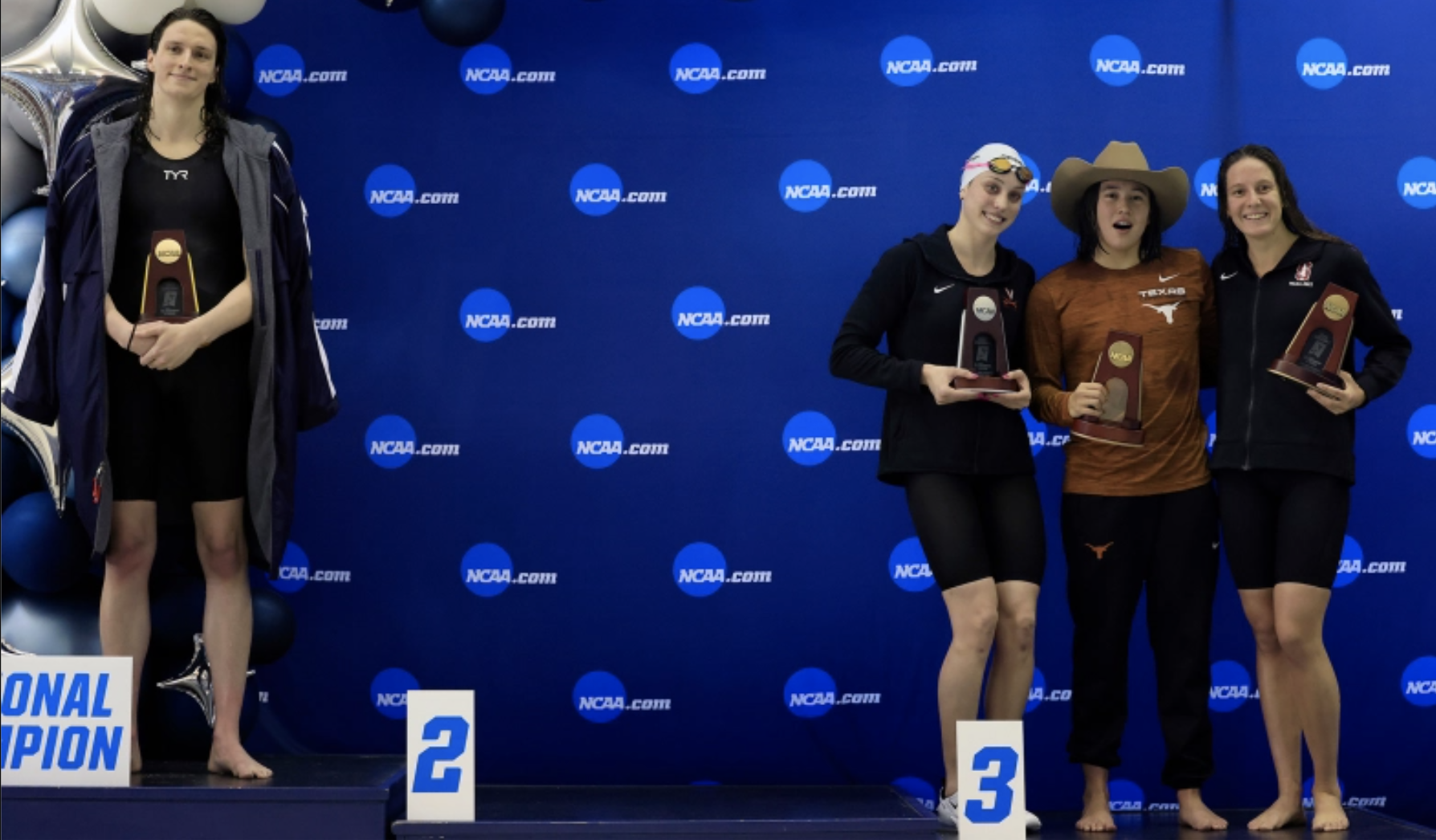Transgender Athletes in the Sports World
by Mabel K. ‘24
With society attempting to become more equitable and inclusive comes the need for discussion surrounding transgender people’s space in sports. Lia Thomas has brought this conversation to the swimming community. Thomas is a woman who transitioned in 2019 after competitively swimming for the UPenn Men’s team for 3 years. Because she has been receiving hormones for two years, the National Collegiate Athletic Association (NCAA) guidelines now allows her to compete in the Women’s League. Exceeding her competition, she has shattered women's records and time standards. However, her accomplishments have raised questions surrounding authenticity due to her muscle mass capacity and physical advantages, despite her hormone intake. Sixteen members of Thomas’s own UPenn women’s team have anonymously claimed that she has “taken competitive opportunities away.” This topic sparked controversy across the nation, resulting in a change to the NCAA rulebook.
NCAA acknowledged that a rule change was needed, yet, deferred setting rules and regulations regarding transgender people’s participation to each sport; passing the responsibility to USA Swimming. This issue has become more pressing because the highly competitive 2022 NCAA D1 Women’s Swimming and Diving meet required colleges to send their final roster by February 28th 2022. To qualify for this meet, swimmers must either meet the NCAA time standard of an “A cut” or undergo consideration with a “B cut.” However, the meet limits the number of swimmers permitted on their roster, making this an exceptionally coveted meet. College swimmers dedicate the majority of their time to breaking the records set at past NCAA meets, set by Olympic Gold Medalists such as Missy Franklin and Katy Ledecky. NCAA records motivate swimmers to perform their best. So, with the premise of inequitable racing in both the present and future, female transgender swimmers, such as Lia, stand to unfairly break these longstanding inspirational records. Cisgender women swimmers have lost motivation, causing a public uproar.
Photo courtesy of National Review.
Ultimately, the NCAA permitted Lia Thomas to compete at the 2022 meet in the women’s division. She raced in three individual events: 500, 200, and 100 Freestyle. Despite many predictions, Lia did not break any records. However, she did emerge from the meet with three trophies from the A-final. Thomas won the national champion title in the 500 freestyle. During the medal ceremony, Lia stood on the first place stand, while the 2nd, 3rd, and 4th place finishers posed for a picture together, without Lia. This picture of Lia separated from Emma Wayent (2nd place), Erica Sullivan (3rd place), and Brooke Forde (4th place) in a huddle went viral. On her Instagram, Erica Sullivan expressed her displeasure with the public’s response. She explained that the three runner-up swimmers wanted to demonstrate their friendship, not protest. All three runners-up had trained and participated in the 2021 Tokyo Olympics together, and the picture was meant to memorialize their accomplishments. Further elaborating, Sullivan said that she fully supports Lia and commends her swimming talent. However, unlike Sullivan, many people do not support Thomas. During the meet, protesters appeared outside and inside the building, as well as on social media. The night that Thomas placed first in the 500, the protests reached a high. During the medal ceremony, the crowd erupted for Emma Wayent, but barely applauded for Thomas. The following days, Thomas placed fifth in the 200 freestyle and eighth in the 100 freestyle, adding time in both events. The negative comments Thomas faced were extensive and most likely affected her races.
Before the meet, USA Swimming released multiple statements, stating that they “firmly believe in inclusivity and the opportunity for all athletes to experience the sport of swimming in a manner consistent with their gender identity and expression.” Yet, they also state that they “strongly believe in competitive equity” and are trying to do, “[their] best to learn and educate [them]selves on the appropriate balance in this space.” USA Swimming also released a policy for at the elite level regarding, “transgender athlete participation in the U.S. that relies on science and medical evidence-based methods to provide a level-playing field for elite cisgender women, and to mitigate the advantages associated with male puberty and physiology.”
This leads to questions about what guidelines will be set in the midst of uncertainty. Some suggest an “open league” to permit transgender men and women to separately compete against others in their gender category. In general, dialogue surrounding inclusivity in athletics has greatly increased. Discussion of equity amongst collegiate transgender athletes suggests that high schools, such as Bryn Mawr, may soon be faced with similar debates. Thomas’s case has started a discussion that has the potential to revolutionize the athletic world.


